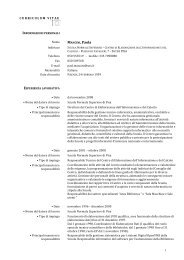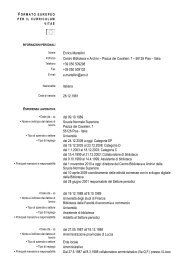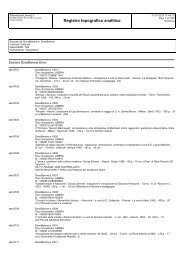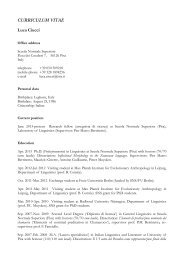Metrics of curves in shape optimization and analysis - Andrea Carlo ...
Metrics of curves in shape optimization and analysis - Andrea Carlo ...
Metrics of curves in shape optimization and analysis - Andrea Carlo ...
Create successful ePaper yourself
Turn your PDF publications into a flip-book with our unique Google optimized e-Paper software.
Theorem 3.30 Suppose that M is a smooth differentiable manifold modeledon a Hilbert space with a smooth Riemannian metric. The derivative <strong>of</strong> theexponential map exp c : T c M → M at the orig<strong>in</strong> is an isometry, hence exp c is alocal diffeomorphism between a neighborhood <strong>of</strong> 0 ∈ T c M <strong>and</strong> a neighborhood <strong>of</strong>c ∈ M.(See [30], VIII §5). The exponential map can then “l<strong>in</strong>earize” small portions <strong>of</strong>M, <strong>and</strong> so it will enable us to use l<strong>in</strong>ear methods such as the pr<strong>in</strong>cipal component<strong>analysis</strong>. Unfortunately, the above result does not hold if M is modeled on aFréchet space.3.6.6 Hopf–R<strong>in</strong>ow theoremTheorem 3.31 (Hopf–R<strong>in</strong>ow) Suppose M is a f<strong>in</strong>ite dimensional Riemannianor F<strong>in</strong>sler manifold. The follow<strong>in</strong>g statements are equivalent:• (M, d) is metrically complete;• the O.D.E. (3.3) can be solved for all c ∈ M, η ∈ T c M <strong>and</strong> v ∈ lR;• the map exp cis surjective;<strong>and</strong> all those imply that, ∀x, y ∈ M there exists a m<strong>in</strong>imal geodesic connect<strong>in</strong>g xto y.3.6.7 Drawbacks <strong>in</strong> <strong>in</strong>f<strong>in</strong>ite dimensionsIn a certa<strong>in</strong> sense, <strong>in</strong>f<strong>in</strong>ite dimensional manifolds are simpler than their correspond<strong>in</strong>gf<strong>in</strong>ite-dimensional counterparts: <strong>in</strong>deed, by Eells <strong>and</strong> Elworthy [18],Theorem 3.32 (Eells–Elworthy) Any smooth differentiable manifold M modeledon an <strong>in</strong>f<strong>in</strong>ite dimensional separable Hilbert space H may be embedded asan open subset <strong>of</strong> that Hilbert space.In other words, it is always possible to express M us<strong>in</strong>g one s<strong>in</strong>gle chart. (Butnote that this may not be the best way for computations/applications).When M is an <strong>in</strong>f<strong>in</strong>ite dimensional Riemannian manifold, though, only asmall part <strong>of</strong> the Hopf–R<strong>in</strong>ow theorem still holds.Proposition 3.33 Suppose M is <strong>in</strong>f<strong>in</strong>ite dimensional, modeled on a Hilbertspace, <strong>and</strong> (M, d) is complete, then the O.D.E. (3.3) <strong>of</strong> a critical geodesic canbe solved for all v ∈ lR.But other implications fails.Example 3.34 (Atk<strong>in</strong> [3]) There exists an <strong>in</strong>f<strong>in</strong>ite dimensional complete Hilbertsmooth manifold M <strong>and</strong> x, y ∈ M such that there is no critical geodesic connect<strong>in</strong>gx to y.30




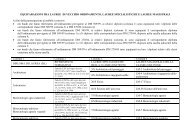
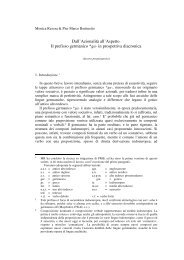
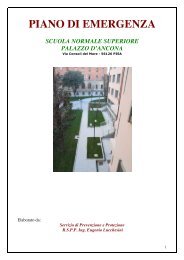
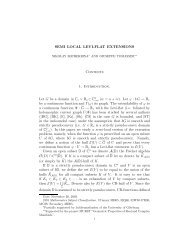
![4. Ghost [Å] vowels in French - Laboratorio di Linguistica](https://img.yumpu.com/49999334/1/184x260/4-ghost-a-vowels-in-french-laboratorio-di-linguistica.jpg?quality=85)



